Power Generation
Battery Tanker
The Japanese company PowerX is building a tanker that will ship energy — not as oil, but rather as electricity stored in giant batteries. It will be shipping this electricity to islands off the coast of Japan.Why not transmit the electricity the traditional way, with wires? Because undersea cables in this region would be vulnerable to earthquakes. So the company sees a market for delivering the electricity via ships.
More info: New Atlas

Posted By: Alex - Mon Jun 05, 2023 -
Comments (0)
Category: Oceans and Maritime Pursuits, Transportation, Power Generation
Heating Gas From White Clover
The future in which our energy needs were met by white clover never materialized.I wonder if there was something special about white clover that produced more/better gas? Or had they simply succeeded in producing the kind of biogas that can be derived from any plant material?

St. Lous Post-Dispatch - Nov 17, 1935

Lowry City Independent - Dec 26, 1935
ST. Paul, Minn. Nov. 6 (1935) — Discovery of a method for manufacturing a commercially adaptable gas from ordinary clover was claimed today by Dean R.U. Jones, head of the MacAlaster college chemistry department, for two of his students.
Dean Jones attributed "great possibilities" to the discovery. William Mahle and Harold Ohlgren, the latter a football star, said they developed the gas from a secret process, accidentally encountered.
Both seniors, Marle and Ohlgren conducted experiments under the direction of Dean Jones and Prof. R.B. Hastings of the college physics department. They worked with white clover plucked from roadsides.
"I am convinced," Dean Jones said, "there are great possibilities in the boys' discovery, and I believe it can be worked out commercially. I am proud of the boys, for I gave them a problem and they went far ahead of me."
Posted By: Alex - Tue Feb 07, 2023 -
Comments (4)
Category: 1930s, Power Generation
Dryer lint as a source of renewable energy
In the Journal of Analytical and Applied Pyrolysis, a group of researchers recently published what they claim to be "the first research developed to investigate potential applications of dryer lint in the energy recovery field."They collected dryer lint from three different households, analyzed its composition, and then determined its potential use as a fuel. Their conclusion: "lint could be a new sustainable biomass source for renewable energy."
Hopefully they'll analyze the fuel potential of belly-button lint next.
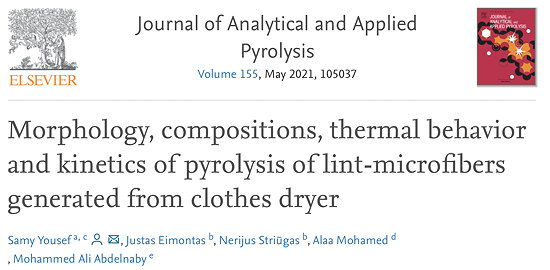
via New Scientist
Posted By: Alex - Wed Dec 21, 2022 -
Comments (4)
Category: Power Generation
Texaco Toy Tanker
Embrace your large carbon footprint with a model tanker ship!
Posted By: Paul - Thu Sep 08, 2022 -
Comments (1)
Category: Kitsch and Collectibles, Oceans and Maritime Pursuits, Toys, 1950s, 1960s, Power Generation
Fuel from hazelnut shells
Back in 2000, Dr. Murat Dogru of the University of Newcastle demonstrated that it was possible to extract significant amounts of hydrogen fuel from hazelnut shells.I'd like to imagine that the world of tomorrow will be powered by hazelnut shells and poop gas.
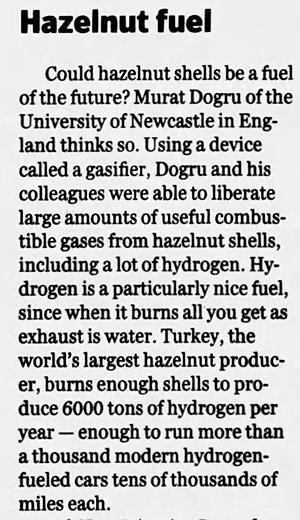
Boston Globe - Dec 26, 2000
I wonder if there's something special about hazelnuts? Or can most nut shells similarly be converted into fuel?
More info: Newcastle University
Posted By: Alex - Sun Aug 28, 2022 -
Comments (1)
Category: Power Generation
Cook with your own biogas
The HomeBiogas Bio-Toilet collects your poop and uses anaerobic digestion to decompose it, transforming it into biogas (methane) that you can use for cooking. The kit comes with everything you need: the toilet, the tent in which the methane conversion/collection happens, and the stove for cooking.I'm intrigued by the idea, but I wonder if the methane would have any lingering smell. Can't find this addressed on the product website.
More info: HomeBiogas.com
Along similar lines, here's an article about a university in South Korea that's using human biowaste to power a building. People who contribute their poop, by using the toilet in the building, earn "a virtual currency called Ggool, which means honey in Korean." This currency can be used to buy goods on campus.
Posted By: Alex - Wed Jul 20, 2022 -
Comments (4)
Category: Excrement, Power Generation
Electricity from falling workers
3M recently received a patent (No. 11,260,252) for a safety harness that generates electrical power when a worker (wearing the harness) falls off a building.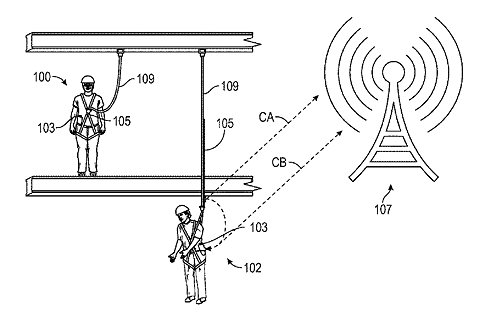
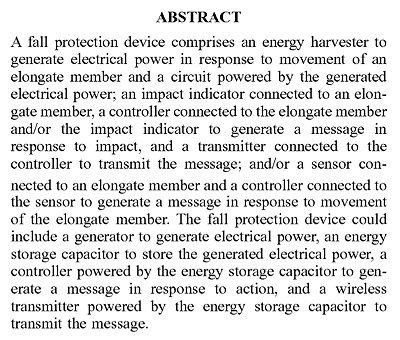
Digging deeper into the patent, it becomes clear that 3M is imagining that if the safety harness is self-powered, it can readily transmit a help message. As opposed to it being battery-powered, which runs the risk of the battery being dead when needed.
Still, it's amusing to think of falling workers as the solution to the world's energy problems.
Posted By: Alex - Wed May 04, 2022 -
Comments (2)
Category: Patents, Power Generation
The Adequate Wiring Bureau
Nowadays, to describe something as 'adequate' sounds like it's damning with faint praise. It doesn't come across a ringing endorsement. It's like getting a 'B' on a homework assignment instead of an 'A'. It's merely adequate, not great.But evidently the word once had a much stronger positive association in general usage, as seen in the existence of the National Adequate Wiring Bureau. Many states also had their own Bureaus of Adequate Wiring. Their goal was to encourage homes to have proper, code-compliant electrical wiring.
As far as I can tell, the National Adequate Wiring Bureau came into existence as early as the 1890s, but there is no such thing today. By the 1970s, Adequate Wiring Bureaus had quietly begun to change their names, dropping the word 'adequate'.
It reminds me of the "Miss Typical" awards that used to be bestowed on young women. In today's culture, being typical or adequate no longer sounds like a compliment.

Brandon Times - Mar 12, 1953
I like this 1974 ad from the Adequate Wiring Bureau of Western New York, which used the idea of the sun suddenly going out, and the Earth being plunged into a freezing-cold apocalypse, as a way to promote the need for adequate wiring.
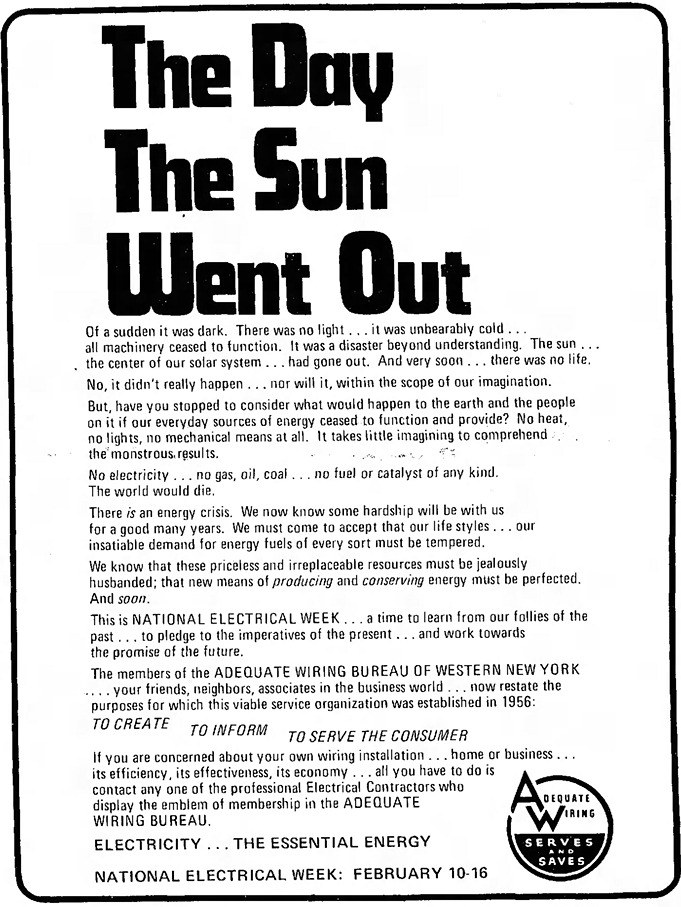
Wellsville Daily Reporter - Feb 13, 1974
Posted By: Alex - Sat Sep 28, 2019 -
Comments (1)
Category: Languages, Odd Names, Public Utilities, Power Generation
Toast as a unit of power
Odd units of measurement: Back in 1975, Allan Clemow of Tufts University figured out how to translate power consumption into pieces of toast. By his estimate, one kilowatt hour was equivalent to toasting 60 slices of bread. Therefore:- Ironing for an hour = 68 slices of toast
- Watching TV for 4 hours = 100 slices of toast
- Blow-drying your hair for 10 minutes = 4 slices of toast
- Drying a large load of clothes = 270 slices of toast
These estimates may all now have changed thanks to more energy-efficient appliances.
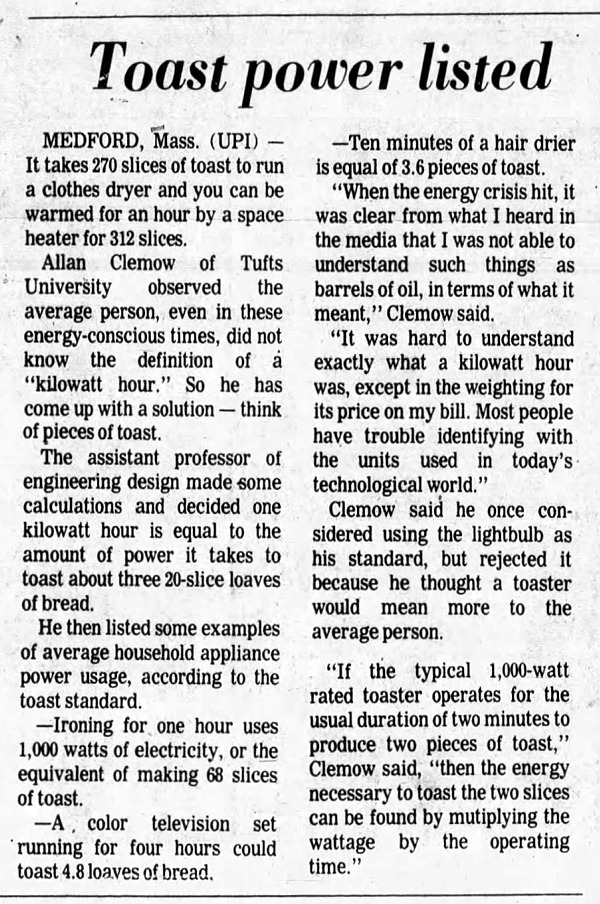
Casper Star Tribune - Nov 20, 1975
Posted By: Alex - Fri Feb 22, 2019 -
Comments (1)
Category: Food, 1970s, Power Generation
Nuclear Bikini Contest

Want a job at a nuke plant? Hope you look good in a bikini.
Full story here.
Posted By: Paul - Mon Jul 03, 2017 -
Comments (4)
Category: Body, Sexuality, Europe, Power Generation

| Who We Are |
|---|
| Alex Boese Alex is the creator and curator of the Museum of Hoaxes. He's also the author of various weird, non-fiction, science-themed books such as Elephants on Acid and Psychedelic Apes. Paul Di Filippo Paul has been paid to put weird ideas into fictional form for over thirty years, in his career as a noted science fiction writer. He has recently begun blogging on many curious topics with three fellow writers at The Inferior 4+1. Contact Us |




